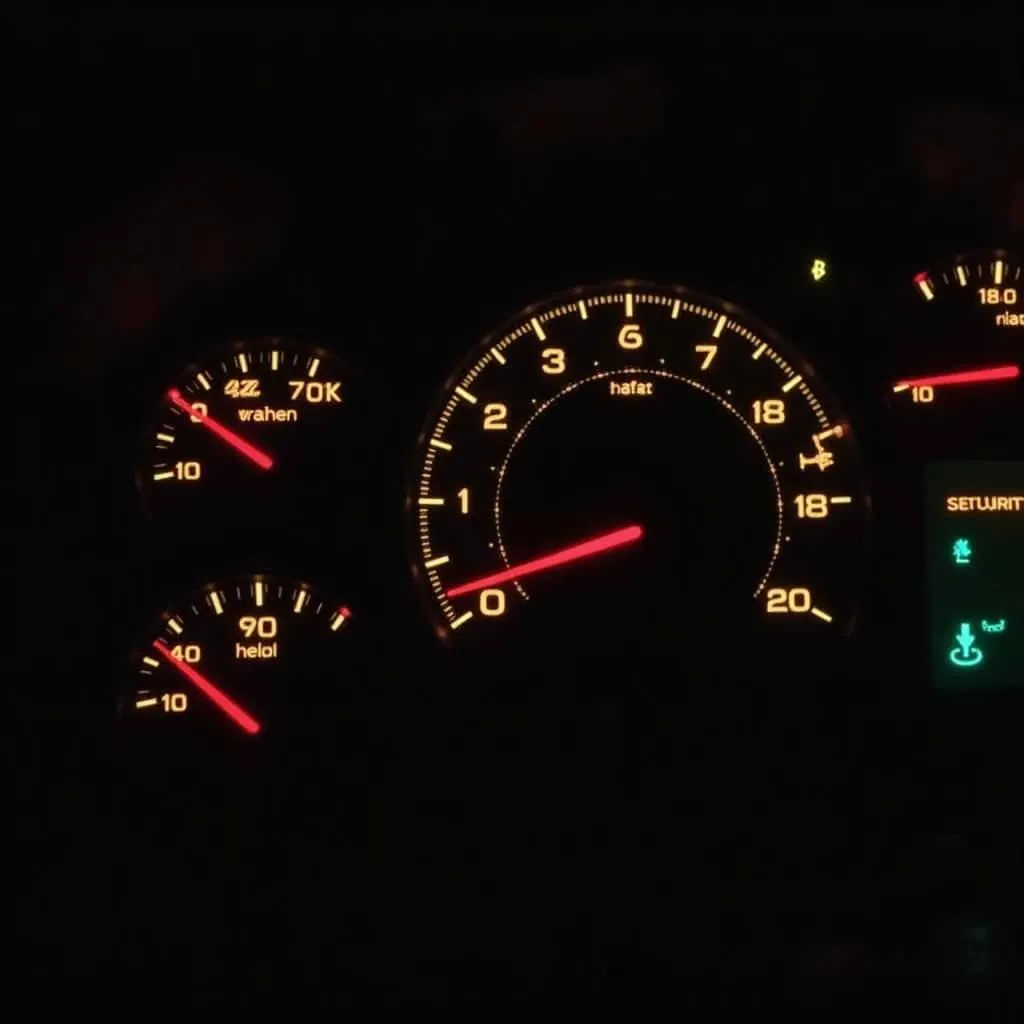Imagine cruising down the highway, suddenly your car screams at you with a confusing message: “258 Collis.Warn. Sys. W/ Active Brake Interv. FCW Stop.” What does it all mean? This cryptic error code often leaves drivers feeling frustrated and unsure of what to do next. This article will break down the meaning of this error, its potential causes, and how you can get back on the road safely.
Understanding the “258 Collis.Warn. Sys. W/ Active Brake Interv. FCW Stop” Error
This error message indicates a problem with your vehicle’s Advanced Driver-Assistance Systems (ADAS), specifically those designed to prevent collisions. Here’s a breakdown of the key components:
- 258: This is a manufacturer-specific code. While the exact meaning might vary slightly between car brands, it generally signals an issue within the ADAS.
- Collis.Warn. Sys.: This refers to your vehicle’s Collision Warning System. This system uses sensors to detect potential collisions and warn the driver with visual, audible, or haptic (vibration) alerts.
- Active Brake Interv.: This stands for Active Brake Intervention. As a step beyond collision warnings, this system can automatically apply the brakes if it senses an imminent collision.
- FCW: This acronym refers to Forward Collision Warning, a core function of the Collision Warning System.
In essence, the “258 Collis.Warn. Sys. W/ Active Brake Interv. FCW Stop” error means one or more of these safety systems are malfunctioning and require attention.
What Causes This Error?
Several factors can trigger the “258 Collis.Warn. Sys. W/ Active Brake Interv. FCW Stop” error:
- Sensor Malfunctions: ADAS rely heavily on sensors, often located behind the windshield or in the front grille. Dirt, debris, snow, ice, or even minor damage can obstruct these sensors, leading to false readings or system errors.
- Software Glitches: Like any computer system, your car’s ADAS relies on software. Software bugs or outdated versions can disrupt communication between the sensors, control units, and braking system, resulting in error codes.
- Wiring Issues: The complex network of wiring that connects the various ADAS components can become damaged due to wear and tear, corrosion, or rodent interference.
- Faulty Control Module: The control module acts as the brain of the ADAS. A malfunctioning module can disrupt the entire system’s operation.
- Brake System Problems: While less common, issues within the braking system itself can sometimes trigger ADAS errors.
How to Address the Error
Important: Due to the complexity of ADAS and the potential safety risks involved, it is highly recommended to consult a qualified mechanic or dealership specializing in automotive electrical systems for diagnosis and repair.
Here’s a general approach a specialist might take:
- Retrieve Diagnostic Trouble Codes (DTCs): Using a professional-grade diagnostic scanner, they can read the specific DTCs stored in your vehicle’s computer. This provides more detailed information about the nature and location of the fault.
- Inspect Sensors: A visual inspection of all relevant sensors will be conducted to check for obstructions, damage, or misalignment.
- Test Wiring and Connections: The wiring harness and connections will be thoroughly examined for any signs of damage, corrosion, or loose connections.
- Check Software Version: The specialist can determine if your vehicle’s ADAS software is up-to-date and perform any necessary updates.
- Diagnose Control Module: Specialized equipment may be used to test the functionality of the ADAS control module.
Expert Insight
“Many drivers underestimate the complexity of modern ADAS,” says John Smith, a senior automotive electrical systems engineer with over 15 years of experience. “These systems involve intricate interactions between various sensors, software, and mechanical components. Attempting DIY fixes without proper knowledge and equipment can be dangerous and potentially worsen the problem.”
Preventing Future Errors
While not all ADAS issues are preventable, these tips can help minimize the risk:
- Regular Cleaning: Keep your windshield and front grille clean, paying close attention to the areas where ADAS sensors are located.
- Scheduled Maintenance: Adhere to your vehicle’s recommended maintenance schedule. This typically includes inspections of ADAS components.
- Software Updates: Check with your dealership or manufacturer for any available software updates for your vehicle’s ADAS.
Conclusion
The “258 Collis.Warn. Sys. W/ Active Brake Interv. FCW Stop” error message signifies a potential problem with your vehicle’s crucial safety systems. Understanding the meaning of the error and its potential causes can empower you to take the right steps toward a safe and timely resolution. Remember, consulting a qualified professional is always the safest and most effective approach when dealing with complex automotive electronic systems.

